Nature loves those who dare. Those who dare to commit are those who are rewarded. Those who dare to lose sight of the coast are those who discover new horizons. Those who dare to take a leap of faith are those who take flight. After meeting Thomas, co-founder and designer at BằNG, I learned that he is one of those people. He is one of those who dares.
Thomas has a saying I love — “Design ain’t no office job.” If you want to build something great, you gotta get in there. Get your feet wet. Get your hands dirty. Get close to the action. It’s not enough to simply perform your duties, clocking in, clocking out, you have to labor to reap the fruits of your labor. You don’t learn that sitting in an office. However, ironically, Thomas first learned from people who did: his parents.
When Thomas was a kid, his parents would come home from their office jobs and put him to work helping with DIY projects. Fixing broken tiles. Repairing old cars. Building wooden terraces. And when you’re a kid such things feel like work at first. But he and his parents couldn’t help but realize how drawn he was to the tactile world. Now that he’s older, he looks back realizing that beneath that feeling of work was an even deeper sense of play.
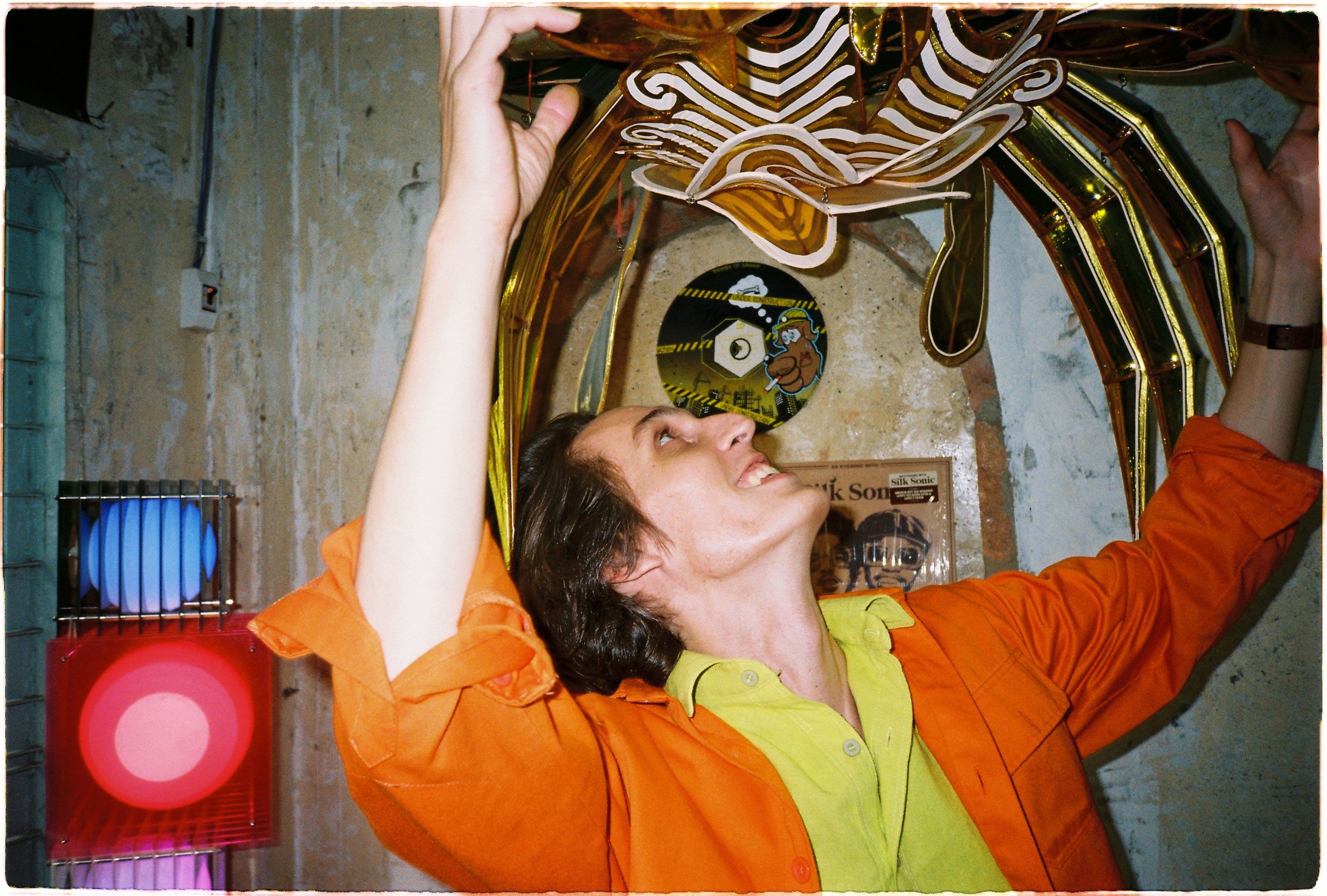
At fifteen he left his hometown of Tarbes to study at high school in Toulouse. Once he turned 18, he left for university in Paris where he studied at STRATE - School of Design. Thomas enjoyed his time there and how much his teachers pushed him to consider tangible questions like is your design actually possible to make and can people actually use this? Such practical questioning has stayed with him all these years. Furthermore, his program required him to complete two internships: one in a design agency and the other in a factory — he loved the latter. He felt it was hard to develop as a designer in an agency setting. Instead he wanted to be right next to the engineers making stuff on the factory floor. In other words, the agency life equaled work while the factory experience meant play. Thus, upon graduating it was time for Thomas to make a decision: stay in Paris or take a leap of faith? Again, he went with the latter.
Thomas dared to commit to his love for working in the factory, dared to lose sight of his country’s coast, and dared to take a leap of faith. As such he ended up moving to Vietnam in 2016 to work as an intern at Elek, a furniture and lighting manufacturer. For the next five years he worked with various brands all across Europe, the US, Australia, as well as in Vietnam. During that period, he gained plenty of experience in R&D, prototyping, lab tests, engineering, safety standards, and packaging, leading him to developing a holistic perspective about different products in different contexts. Despite the support and knowledge he received from the Elek team, he credits a lot of his learning to his boss and company’s CEO, Marc Bregeault. Years later in 2021, he and Marc co-founded BằNG.
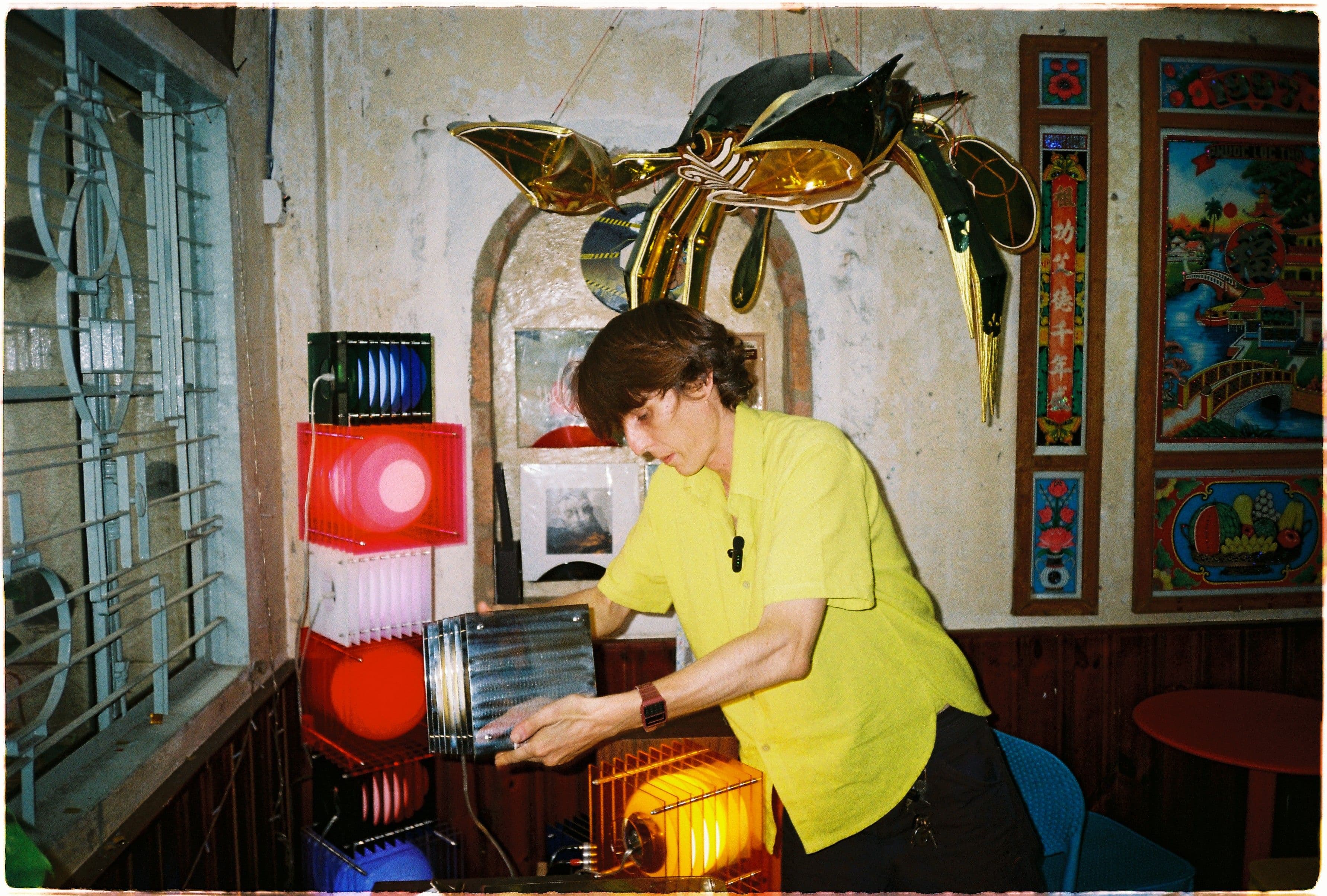
Since founding BằNG, their brand has released a few collections crystallizing Thomas’ key design principles. He sums these up in four categories which he believes take value in the execution process. First, a product must be understandable. Whether that’s the shape, the construction, the repairing, or the disassembling, people should intuitively relate to it. Second, a product must be open, meaning friendly and acceptable. As Thomas says, it should be calling out to you to use it. Third, a product must be innovative. It should stir your emotions and ignite your curiosity. Finally, a product must have common sense. It should be understandable, open, and innovative all while staying down to earth. Thomas likens his principle ideas to designers like Rowan & Erwan Bourollec, Marc Newson, and Inga Sempé, who notably summed up great industrial design into a holy trinity: use, beauty, and productibility. That is to say, great design means you can use it, it’s nice to look at, and you can build it — just like his professors taught him back in Paris.
Beyond Thomas’ key design principles, he has a philosophy that helps mold BằNG’s identity — he says, “In constraints, I trust.” This means working with minimal materials. This means working with more manual machinery. This means adapting to constraints, by choice rather than consequence. And lastly, this means removing, removing, removing, retaining control of the process, and remaining simple with his design. Moreover, he notes the place where something is made can be felt in the product itself. Thomas highlights living in Vietnam, one of the most industrious manufacturing hubs in the world, as one of the more ideal environments to provide not only the constraints he trusts but also the inspiration he craves.

Inspiration is tricky. It’s difficult to ask people where their ideas came from because it’s even more difficult for them to pinpoint their source. Nevertheless, the topic of inspiration was one that I was most excited to talk to Thomas about when we met at Neo- for coffee. There, surrounded by dozens of his internationally recognized, award winning lights from BằNG’s Lớp Collection, it was the perfect environment and moment to present my theory to him about his design. Or so I imagined.
I’m guessing you’ve probably seen it already — the acrylic, the stainless steel, the matte opal glass. From Vietnam to Paris to New York — it is everywhere. Stacked all around at Neo-. Sitting next to my bed and on my table in my room. Resting in this live session with Vietnamese singer Naomi. It’s even in this video featuring A$AP Rocky doing a photoshoot for Vogue before the Met Gala. Word on the street is the rapper brings his own furniture with him when he travels and the Lớp lamp was part of his ensemble. For Thomas, at 32 years old, seeing A$AP Rocky carrying his lights was an unfathomable sight when he first watched the video, given that he's been listening to his music for over a decade.
Needless to say, the design is becoming iconic. But why? What does it mean? And where did it originate? These are the questions that were floating around in my head. So, I did some research and came up with a theory of my own.
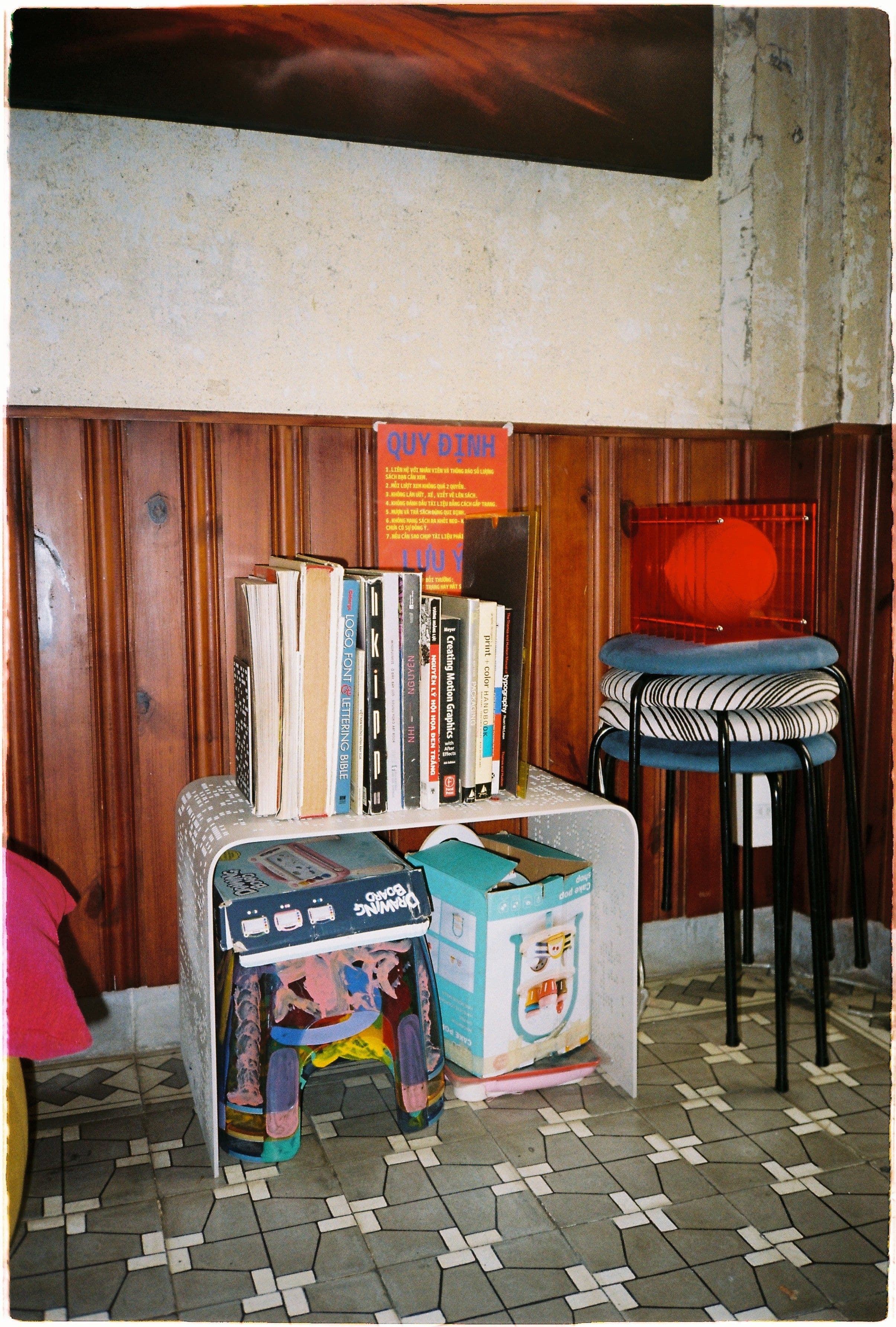
The first spark of the idea Thomas had was to create a sphere floating in something. While chatting, he moves his laptop to the side, pulls out a pen and paper and draws a rectangle with a circle inside. That was the basic idea at first, he says. Then he drew another circle with a few lines running through it. At that point, the spark of his idea caught fire. The self-initiated challenge became a formulated solution: create a sphere floating through layers. Hence the name ‘lớp’ or ‘layers’ in Vietnamese. It was at this point, giddy with excitement, that I presented my theory to him.
Before meeting I discovered that his full name is Thomas Bình-Minh Vincent. Bình Minh was the name given by his Vietnamese grandfather, who moved from Vietnam to France many years ago. I also discovered that ‘bình minh’ means sunrise in Vietnamese. And if you visit BằNG’s website, you’ll see on the homepage their popular square orange acrylic model. All of which led me to theorize that the design was an ode to his late grandfather. The sphere floating through layers represents the glowing sun rising through the layers of generations between the two, symbolizing a full circle moment. When I shared my thoughts with Thomas he let out a healthy chuckle, telling me how clever that was though it wasn’t true at all. He simply just wanted to create a sphere floating in something. The layers were a result of the constraints necessary to do so. Despite my theory being disproved, I feel the journey of learning that fact speaks to the beauty of the design itself. It’s so simple and elegant that it not only calls out to you to use but it also calls something out of you to feel.
All that said, when Thomas and his team first presented Lớp to the public, no one was interested. He noted people would walk right by it unbothered. It wasn’t until they presented their collection at the LÔCÔ Art Market where people didn’t only stop to look, people stopped to marvel. They loved it. One of those people was Tung, otherwise known as Cheekie, the owner of Neo-. Before you knew it, a Christmas tree of Lớp lights went up, a partnership was formed, and to this day, the cafe, bar, and one of the coolest spots in the city, is still filled from wall to wall with spheres and spheres floating through layers and layers.
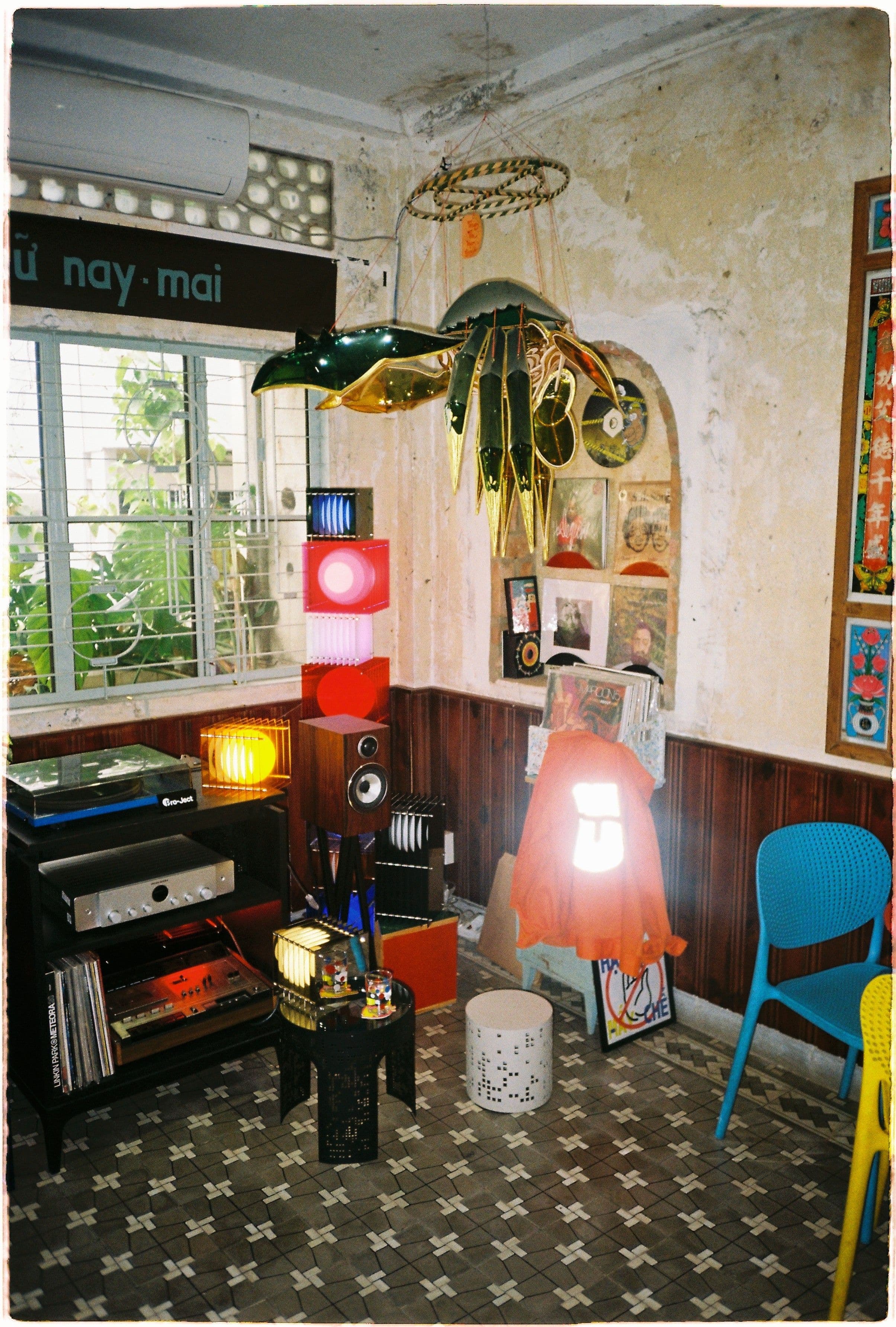
Still, in Thomas’ eyes, the big breakthrough came later in 2023. After being spotted at the Maison et Objet, a major French trade fair for furniture, objects and lighting design, he received news that BằNG was going to be featured in the windows of The Centre Pompidou Design Store. For those who don’t know, The Centre Pompidou is in Paris. It’s a cultural hub home to the Musée National d’Art Moderne, the largest museum for modern art in Europe, as well as a vast public library, cinema, theater, performance space, and, last but not least, one of the most prominent gift shops in the world. And after receiving the news, Thomas broke down. He called his parents back home with tears in his eyes. Even in the moment of him telling me in the cafe, he let out a big sigh, leaned back in his chair, the layers of memories seemingly floating back into his mind. You could tell how big of a moment that really was for him. But here in the present moment, I asked him now that he could look back, whether what he felt was happiness, excitement, or something else. He said neither. It was pure relief.
Going back in time, Thomas describes when he first had the idea — you feel the inspiration, you see the poetry in objects, you start to feel something, and then the idea makes its way to pen and paper. The vision meets the process. Six to seven years later, filled to the brim with six to seven day work weeks, designing, building, rebuilding, day in and day out, until you finally feel the stamp of approval from the outside world. The tears streak down your face. The sense of recognition from the highly recognizable and respected in her field, the Pompidou Design store Director & Curator burst inside. The tension in your muscles releases. You realize taking that leap of faith long ago was worth it.

And just as soon after you realize beyond mountains wait more mountains. After you experience the glowing hues of success you experience its long shadow — the criticism, the expectations, the pressure. Thomas said after that breakthrough moment he came across an interview with DJ Snake. The French record producer spoke of the light and shadow of success. You make a hit song. You get to tour the world. Play your music everywhere. It’s great. It’s wonderful. People love it. You love it. And then after a while, enough people have heard your song so it’s not enough anymore. It’s time you have to make another song, and it’s gotta be another hit. The criticism, the expectations, the pressure begins to mount.
At this point, the key here I gathered from Thomas is to simply return to their factory in Bình Dương. Return to the work. Return to the process. Return to that sense of play. Get your feet wet again. Get your hands dirty again. Get back to the action. Understand criticism is part of the gig. Understand expectations are just expectations. Understand there’s actually no pressure. You have your principles you value. You have your constraints you trust. You have your every day environment calling out to you to use it, calling something out of you to feel, inspiring you, pulling you, pushing you every day and night. Feel it. Use it. See it. Trust your vision. Trust your process. Trust yourself. “The way I handle it is I don’t force,” Thomas says, “sure people are waiting, but I just let things come.”
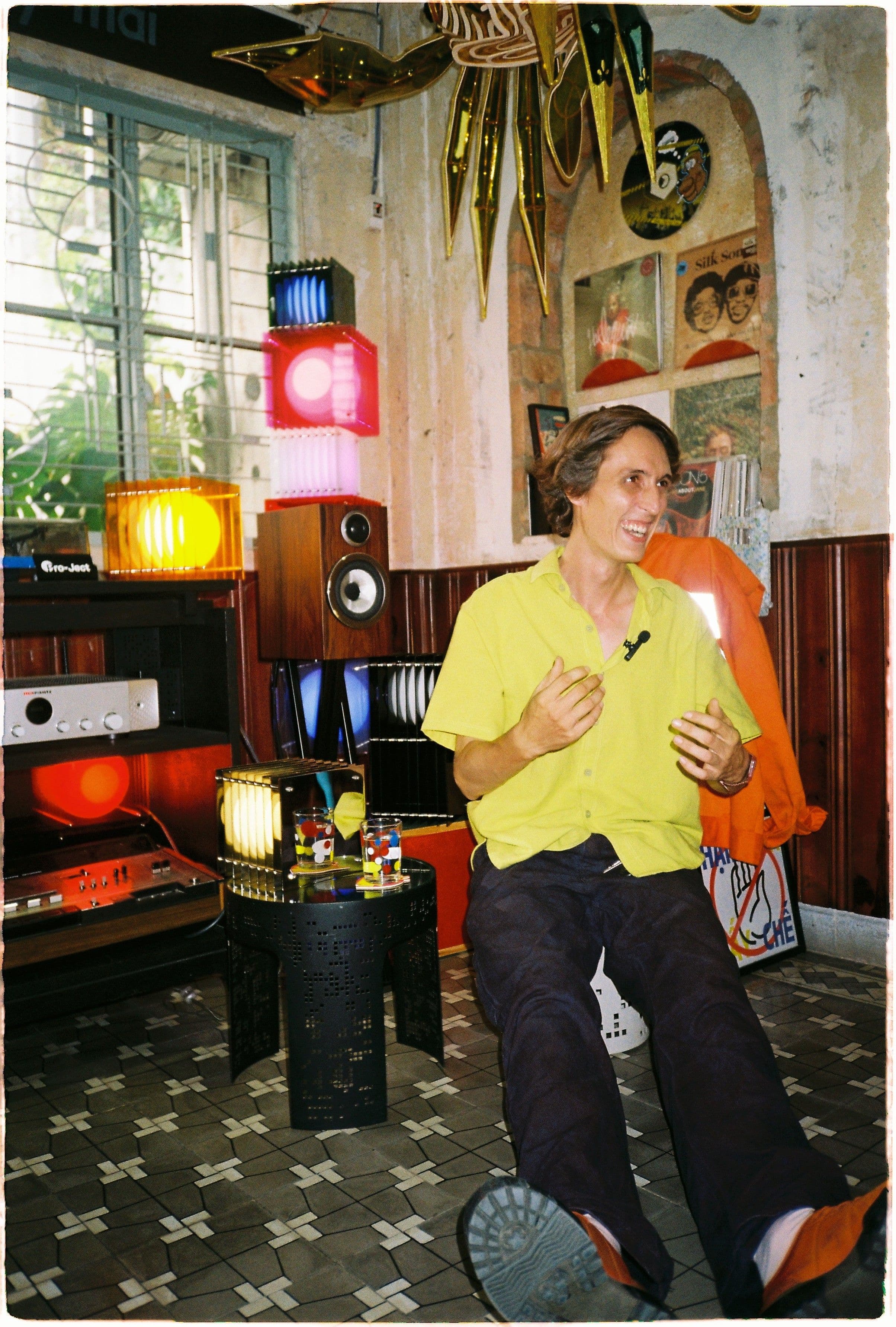
Since then Lớp has received awards such as the Archiproducts Award (2023), MoMA Prize Design Award (2024), German Design Award (2025), and Core77 Awards (2025) . They are actively selling in over 150+ retailers across Asia, Europe, and the US. Thomas and the BằNG team also have released two other collections: Điểm (2021) and QUA (2024). Điểm means “point” or 'dot' in Vietnamese. It is a sleek collection of accessories, furniture and lighting utilizing metal sheets with a square hole matrix. QUA means 'through' in Vietnamese. It is a mirror made from high-grade stainless steels with a curious tilt like the angled mirror hanging off the side of a motorbike. Even with Điểm, Lớp, and QUA under their belt there’s still there’s no pressure, but there is an understanding that another leap of faith is to come.
As Thomas notes a big part of the beauty of design is found in repetition. Designing something again and again and again. Building something again and again and again. Taking it apart and putting it back together again and again and again. It is there, in the repetition, in the again and again and again, that you discover and rediscover why you do what you do and why you are who you are. And through listening to Thomas and his story with BằNG, I learned and relearned he is one of those who dares. Someone who dares to commit to his vision, his process, and his team. Someone who dares to lose sight of past successes in order to look forward to future challenges. Someone who dares to take a leap of faith, take flight, land somewhere somehow, and then take another. And finally, someone who understands if you do not dare, nothing is possible. But if you do, everything is.









